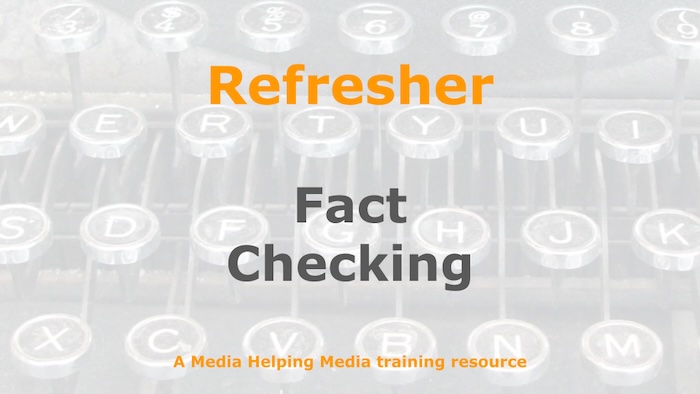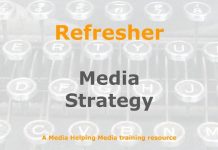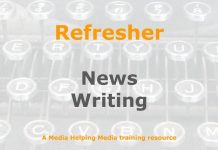 This compressed one-day course provides an intensive overview of the essentials considerations for journalists regarding fact-checking and combating information disorder in the digital age.
This compressed one-day course provides an intensive overview of the essentials considerations for journalists regarding fact-checking and combating information disorder in the digital age.
It covers core principles, efficient verification methods (SIFT, lateral reading), distinguishing different falsehoods (misinformation, disinformation), and building a robust fact-checking system for a news organisation.
The course consolidates the essential content of our six-week module covering fact-checking into an intensive, practical single-day programme, ensuring your journalistic foundation remains robust, accurate, and fair.
We recommend that trainers circulate the recommended reading resources listed below and encourage participants to read them before attending this refresher.
Learning objectives
By the end of this intensive programme, participants will be able to:
- Understand the ethical importance and basic principles of accurate reporting.
- Apply advanced, rapid verification techniques, including the SIFT method and lateral reading.
- Differentiate between misinformation, disinformation, and malinformation.
- Develop effective communication strategies for countering rumours without amplifying falsehoods.
- Design the key components of a strong, resilient fact-checking system.
Programme schedule
The day is structured into four core sessions, with designated times for a coffee break and lunch.
1: Foundations and advanced fact-checking (09:00–10:30)
- Focus: The ethical imperative of accuracy, basic verification steps, and tracing trust chains back to original sources.
- Group activity: Analyse a disputed social media claim and map its trust chain back to the original source.
- Core reading:
(10:30–10:45) – Break
2: Verification tools: sift and lateral reading (10:45–12:30)
- Focus: Mastering the SIFT method for rapid fact-checking and applying lateral reading to critically assess online sources for speed and accuracy.
- Group activity: Apply the SIFT technique to five different online sources covering the same breaking news event.
- Core Reading:
(12:30–13:30) – Lunch
3: Navigating information disorder and fake news (13:30–15:30)
- Focus: Defining and differentiating misinformation, disinformation, and malinformation; recognising various forms of information disorder; and developing strategies for tackling fake news and rumours head-on.
- Group activity: Role-play a crisis: devise an effective communication strategy for countering a dangerous, viral rumour.
- Core reading:
(15:30–15:45) – Break
4: System design and future challenges (15:45–17:00)
- Focus: Designing a strong, resilient fact-checking system for a news organisation, integrating verification into workflow, and reflecting on future challenges (e.g., AI).
- Group activity: Design a four-step internal workflow for integrating fact-checking into daily news production.
- Core reading:
Concluding summary and discussion (17:00 – 17:30)
The course equips journalists with the essential framework for upholding journalistic integrity in a complex media environment. Success relies on both ethical commitment and the practical application of advanced verification techniques to build public trust and combat organised falsehoods.
We suggest you the session with a group discussion asking participants to talk about what they have learnt from the course.








